Two with a View
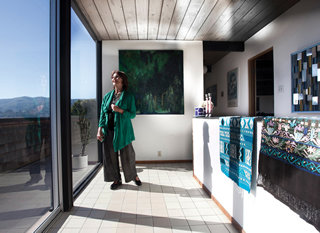 |
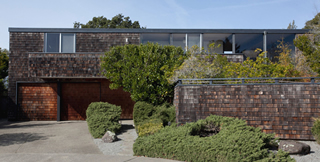 |
|
|
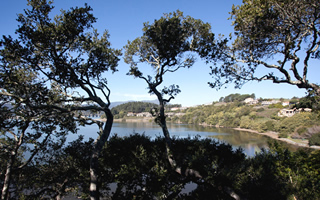 |
|
|
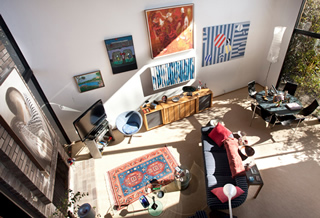 |
|
|
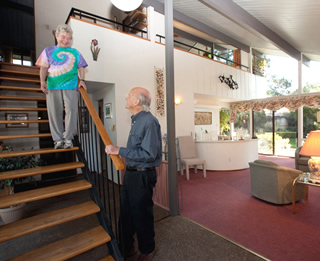 |
|
|
Longtime Eichler owners have often stared when visiting Phil and Sue Fialer’s home in Palo Alto’s Los Arboles neighborhood, one of a handful of original two-story Eichlers in the small subdivision.
Not only does the Fialer home, with its odd, asymmetrical gable, have a stairway—a rarity in an Eichler home—it has a second-floor balcony, like something out of Romeo and Juliet.
“They would come over and be amazed,” Phil says of friends from more traditional, single-story Eichlers.
“They had no idea [two-story Eichlers existed],” Sue adds. “They thought it was an add-on.”
In fact, during the length of his 26-year career, Joe Eichler built only 45 to 50 suburban two-story homes—not counting single-family homes, townhouses, and garden apartments he built in San Francisco and on the Peninsula.
Two-story homes were an endeavor Eichler started early, in Ladera near Portola Valley in 1952, and finished late. His last two-stories were built in the early 1970s, shortly before his 1974 death, in one of his final subdivisions, Los Arboles Addition.
Today, the words ‘Eicher’ and ‘second story’ used in the same sentence often cause true fans to shudder. They picture the generally ill-at-ease, and often downright hideous second-story additions, boxes, or oddly shaped excrescences that mar so many Eichler homes—not to mention entire neighborhoods, where they look out of place and invade the privacy of neighbors.
Many Eichler neighborhoods ban second-story additions to preserve neighborhood aesthetics and ensure that glass-walled living areas and bedrooms remain out of sight from prying eyes.
Owners of original Eichler double-decked homes, however, love them, and insist they were so designed to blend in with their neighbors—and avoid invasion of privacy.
They are quick to tout the advantages of two-story Eichler living.
“The attraction of this house,” Phil says, “is the big, open space. It’s big and airy and open.”
The Fialer house, like several similar models, has a double-height living room, in this case with about a 16-foot ceiling. A half-walled master bedroom looms above, forming a sort of internal balcony.
Half-walls on a second-floor bedroom overlooking an open living area are a device used by many modern architects in custom homes, including Warren Callister in the Bay Area and Carter Sparks in the Sacramento area. It’s conducive to openness but inimical to privacy. The Fialers get around that by retaining what Phil calls “rinky-dink sliding panels,” installed by a previous owner, to extend the half-walls to the ceiling.
Betty Toole’s home in Marin County’s Strawberry Point has a similar bedroom-balcony overlooking its super-height living area, though her house in other ways looks nothing like the Fialers’ Eichler. But she does without the privacy partition.
Toole, an original owner, loves the opening between bedroom and living room, as indeed she loves everything about her home, which she has preserved in its original state throughout her 43-year tenure, from mahogany walls to stovetop.
“I think the real benefit of a two-story, you really get a variety of views,” says Toole, who’d previously lived in an Eichler in Marin’s Lucas Valley. “With a one-story, we didn’t.” And Strawberry, where all the Eichlers sit along the shore of Richardson Bay, is a great place to take in views.




